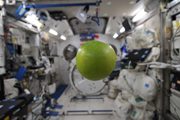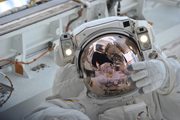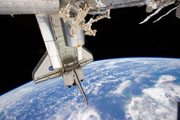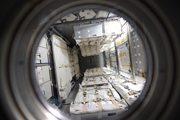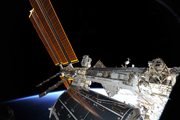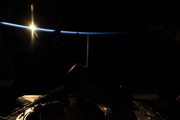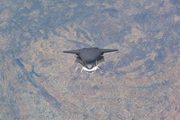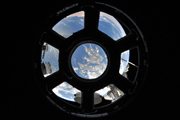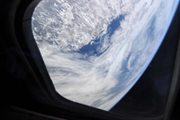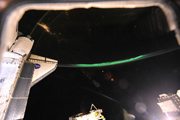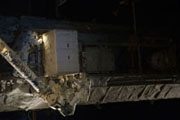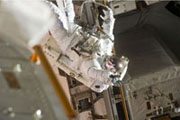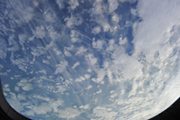 July 8, 2010 – PRESS RELEASE – The images below were captured with equipment, including Nikon D3S digital-SLR cameras, NIKKOR lenses, Speedlights and other accessories, kept aboard the ISS. To date, NASA has captured more than 700,000 images with Nikon equipment carried into space. Among these many images, those rare and precious photos that can only be captured from space, as well as those captured under the extremely low-light conditions of space that exhibit the superior image quality of D3S noise suppression features are introduced.
July 8, 2010 – PRESS RELEASE – The images below were captured with equipment, including Nikon D3S digital-SLR cameras, NIKKOR lenses, Speedlights and other accessories, kept aboard the ISS. To date, NASA has captured more than 700,000 images with Nikon equipment carried into space. Among these many images, those rare and precious photos that can only be captured from space, as well as those captured under the extremely low-light conditions of space that exhibit the superior image quality of D3S noise suppression features are introduced.
Nikon has spent many years contributing to NASA’s study of space through the development and manufacture of advanced and extremely durable cameras and NIKKOR lenses. Production of NIKKOR lenses, which make the most of Nikon’s optical technologies, reached fifty million units last September. Nikon’s history with NASA began with the Nikon Photomic FTN?, a modified Nikon F camera that was used aboard the Apollo 15 in 1971. Nikon’s relationship with NASA continued even with the transition to digital when NASA placed orders for Nikon D2XS digital-SLR cameras in 2008. These cameras are still being used in space today. In 2009, NASA ordered eleven D3S cameras and seven AF-S NIKKOR 14-24mm f/2.8G ED lenses for use in recording activities aboard the Space Shuttle and International Space Station. The D3S cameras were the same products available to consumers with no special modifications, and they were delivered to the ISS via the Space Shuttle Discovery launched on April 5, 2010.
Nikon products kept aboard the ISS
- 1 Nikon D3S digital-SLR camera: Delivered to the ISS via the Discovery with Space Shuttle mission STS-131, which returned on April 20, 2010. Images are primarily those of the surface of the earth and nighttime scenes. Standard consumer product (no modifications).
- 8 Nikon D2XS digital-SLR cameras: Modified according to NASA specifications for recording extravehicular activities (EVA)
- 36 NIKKOR lenses (including three teleconverters)
- 7 SB-800 Speedlights
- 4 D2XS eyepieces: Eyepieces made exclusively for NASA Special eyepiece viewfinders that enable image framing and verification through a space helmet with extravehicular activities.
- Miscellaneous (filters, cables, etc.)
Primary images captured by Nikon products
Image of extravehicular activities on the STS-131 mission.
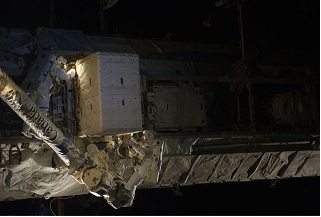
View of astronauts, as they work to tie down an Ammonia Tank Assembly on the International Space Station during STS-131 spacewalk. Photo by NASA
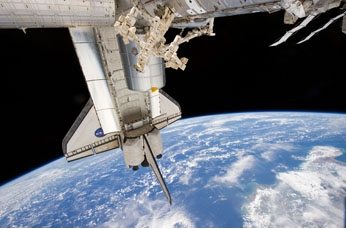
Image of the ISS, Space Shuttle and Earth captured from the ISS. Photo by NASA
Nikon’s history with NASA
- 1971: Nikon Photomic FTN* (NASA specifications) was used on Apollo 15
- 1980: The “Small Camera”, based on the Nikon F3 and equipped with a motor drive, and the F3 “Big Camera”, which utilized long film, were delivered to NASA. The “Small Camera” was used aboard the Space Shuttle Columbia launched the following year.
- 1991: The Nikon F4 and F4S were delivered to NASA
- 1999: The Nikon F5 and AI AF Nikkor lens were carried aboard the Space Shuttle Discovery to photograph extravehicular activities (EVA)
- 2008: D2XS digital-SLR cameras were delivered to NASA. Eight D2XS cameras are still used in space to document activities such as inspections and maintenance operations.
- In addition, approximately 15 types of lenses, more than 35 all together, are kept aboard the International Space Station for intra- and extravehicular photography that supports NASA’s space activities.
*Nikon F equipped with Photomic FTN viewfinder that supports TTL center-weighted metering.
Here are some additional images. Click on the thumbnails to see enlargements.
–
*The Current Photographer website contains links to our affiliate partners. Purchasing products and services through these links helps support our efforts to bring you the quality information you love and there’s no additional cost to you.
Founder of Current Photographer, co-host of The Digital Photography Cafe Show, Designer, Photographer, and overall tech geek.
